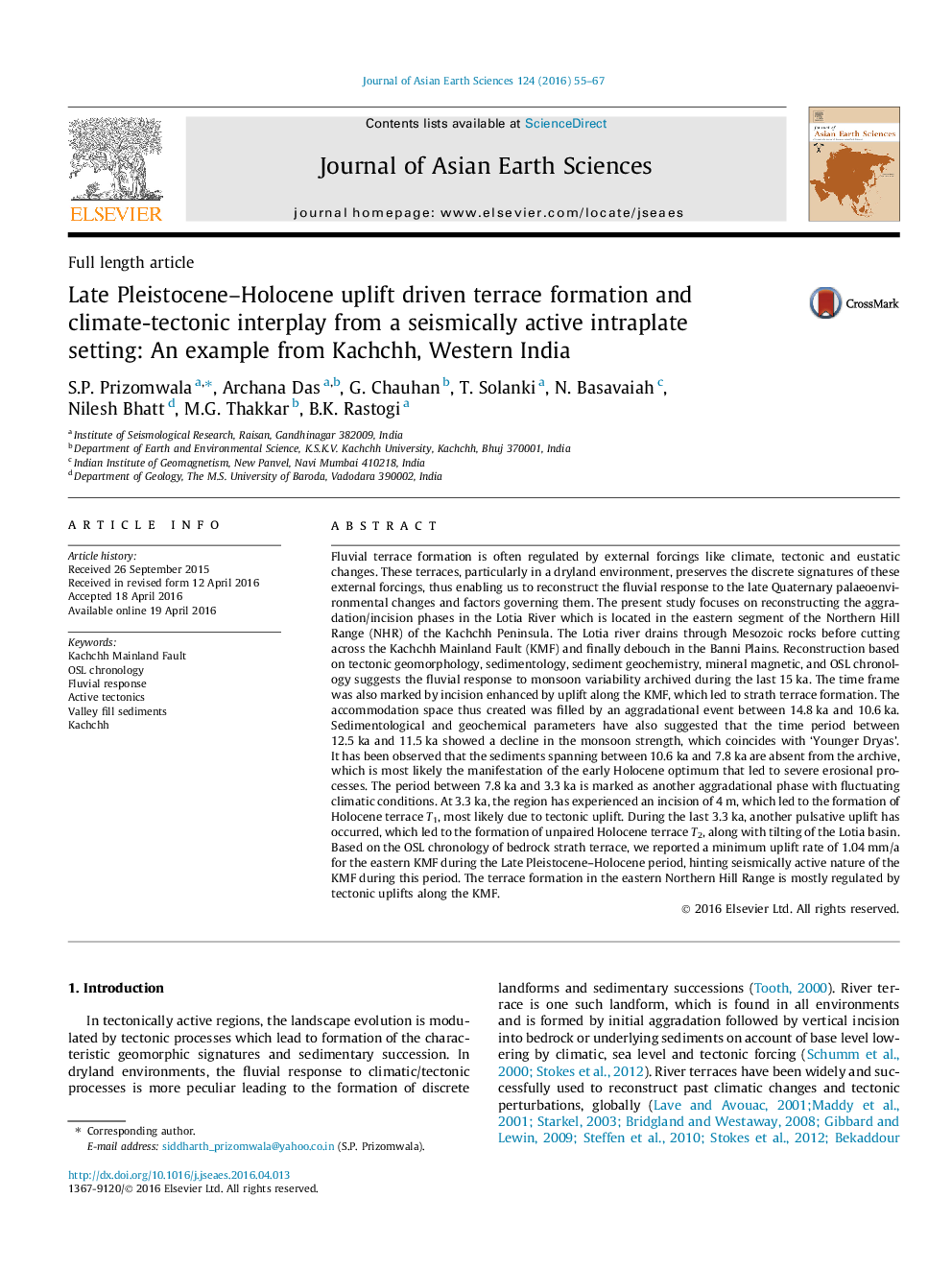| کد مقاله | کد نشریه | سال انتشار | مقاله انگلیسی | نسخه تمام متن |
|---|---|---|---|---|
| 4729977 | 1640347 | 2016 | 13 صفحه PDF | دانلود رایگان |
• The study uses detailed sedimentology, OSL chronology and palaeo-monsoonal proxies.
• Terrace formation is chiefly regulated by uplifts in tectonically active regions.
• Dryland response to Early Holocene Optima and the Younger Dryas was investigated.
• Three pulsative uplifts along KMF are recorded with a minimum uplift rate of 1.04 mm/a.
Fluvial terrace formation is often regulated by external forcings like climate, tectonic and eustatic changes. These terraces, particularly in a dryland environment, preserves the discrete signatures of these external forcings, thus enabling us to reconstruct the fluvial response to the late Quaternary palaeoenvironmental changes and factors governing them. The present study focuses on reconstructing the aggradation/incision phases in the Lotia River which is located in the eastern segment of the Northern Hill Range (NHR) of the Kachchh Peninsula. The Lotia river drains through Mesozoic rocks before cutting across the Kachchh Mainland Fault (KMF) and finally debouch in the Banni Plains. Reconstruction based on tectonic geomorphology, sedimentology, sediment geochemistry, mineral magnetic, and OSL chronology suggests the fluvial response to monsoon variability archived during the last 15 ka. The time frame was also marked by incision enhanced by uplift along the KMF, which led to strath terrace formation. The accommodation space thus created was filled by an aggradational event between 14.8 ka and 10.6 ka. Sedimentological and geochemical parameters have also suggested that the time period between 12.5 ka and 11.5 ka showed a decline in the monsoon strength, which coincides with ‘Younger Dryas’. It has been observed that the sediments spanning between 10.6 ka and 7.8 ka are absent from the archive, which is most likely the manifestation of the early Holocene optimum that led to severe erosional processes. The period between 7.8 ka and 3.3 ka is marked as another aggradational phase with fluctuating climatic conditions. At 3.3 ka, the region has experienced an incision of 4 m, which led to the formation of Holocene terrace T1, most likely due to tectonic uplift. During the last 3.3 ka, another pulsative uplift has occurred, which led to the formation of unpaired Holocene terrace T2, along with tilting of the Lotia basin. Based on the OSL chronology of bedrock strath terrace, we reported a minimum uplift rate of 1.04 mm/a for the eastern KMF during the Late Pleistocene–Holocene period, hinting seismically active nature of the KMF during this period. The terrace formation in the eastern Northern Hill Range is mostly regulated by tectonic uplifts along the KMF.
Figure optionsDownload as PowerPoint slide
Journal: Journal of Asian Earth Sciences - Volume 124, 1 July 2016, Pages 55–67
